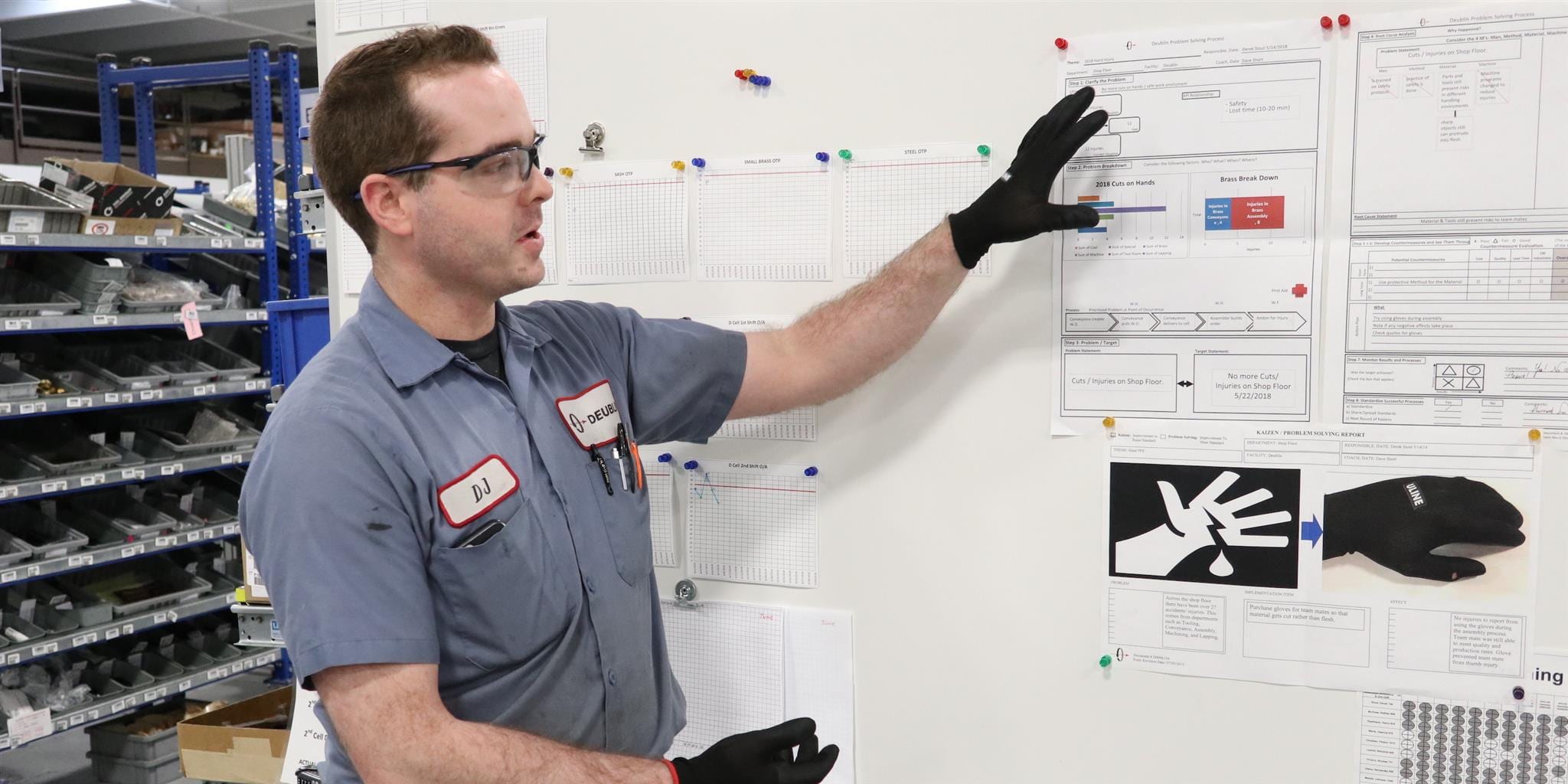
Lean thinking for more resilient supply chains
FEATURE – The Covid-19 pandemic has exposed all the shortcomings of our current supply chains. Lean Thinking can make them more agile, aligned and adaptive.
Words: Alvair Silveira Torres Jr., Project Manager, Lean Institute Brasil
Rare events with a huge impact on our lives are often called “black swan” events by scholars studying decision making in conditions of uncertainty. Nicholas Taleb popularized this metaphor in his 2001 and 2007 books, comparing the occurrence of improbable events in society with infrequent presence of black swans in nature. Both are rarely observed, but exist nonetheless. It’s just that we forget about them.
At first sight, the Covid-19 pandemic could be classified a black swan event, but the frequency at which epidemics have occurred in this century alone – H1N1, SARS, MERS, Ebola and Zika, among others – perhaps makes the tsunami metaphor much more suitable.
Tsunamis happen in relatively long intervals and are therefore perceived as single events. However, we know that they exist and periodically occur (we have experts studying them using complex theoretical models). Taleb called these rare but expectable events “grey swans”, to distinguish them from the “black swans” – outliers that never occurred before and can only be explained rationally after they have taken place. Both tsunamis and epidemics seem to fall under this category.
Using the tsunami metaphor to think about the effects of the Covid-19 pandemic on the supply chain is also useful to draw attention to the fact that their impact is magnified in the short term but will actually last for a long period of time due to the structural changes it causes.
The problem looks overwhelming when we look at it from the outside, thinking in terms of businesses stalling, demand plummeting, mobility restrictions, and uncertainty on when it will all end. That’s why I believe it’s necessary to look at it from the inside, from a management standpoint, with Lean Thinking informing our analysis. This way we can better understand the details of the phenomenon and propose some countermeasures.
It is therefore necessary for management teams around the world to adopt a number of practices that can help us to coexist with restrictions and temporary solutions in the medium term and to create new ways of operating in the long term. Making our supply chains more adherent to the principles of agility, leveling and adaptability is a pressing need right now, one that Lean Thinking can help us meet. Let’s analyze these three elements more in detail, with a look at how they pertain to the Covid-19 crisis (in particular here in Brazil).
1. AGILITY
This factor has to do with rapid-response measures to changes in demand and supply in the short term and with the ability to deal with external interruptions to the internal flow of our supply chains. It is critical that the different actors in a supply chain coordinate their efforts to improve the situation and quickly implement the changes that are needed to respond to the crisis.
We have observed, for example, many countries – including Brazil – struggling with the attainment of critical supplies, such as masks, ventilators, reagents, PPE, and other medical equipment. The rapid increase in capacity that was promised was not achieved because of a lack of agile decision making in the search for alternative suppliers and in the conversion of existing manufacturing capability to high-demand healthcare products. Providing increased agility to the supply of medical products means to facilitate the flow of information among suppliers across a country’s industrial landscape to boost collaboration. It also means to work more closely with international suppliers that can provide technical support and access to the designs and specifications of equipment, as well as discuss potential alternatives.
In recent weeks, as part of their effort to increase the production of ventilators in Brazil, national producers detected a bottleneck in the supply of an imported valve. The demand for this component is global and requires an agile answer in the search for collaborative solutions with global suppliers by means of kaizen:
- Engineering efforts to replace the component or specific material with a similar one.
- Collaborative development of alternative processes to increase the capability to produce the component in other locations.
- Making current process specifications and methods available to technical communities for collaboration on the effort.
Agility is strictly connected with the ability to collaborate and take rapid action by doing kaizen across organizations and supply chains. To do so effectively will require transparent and coordinated lean leadership across several suppliers, and the second essential element for restructuring our supply chains: leveling.
2. LEVELING
The second element entails the leveling of responsibilities, knowledge, and production capabilities to achieve specific objectives agreed upon by different actors in the supply chain.
If the interests of the different actors are in conflict with one another, the actions will not converge to meet current needs and maximize the effort. In the case of the Covid-19 crisis, the scale of the problem calls for leadership and governments to work towards achieving such alignment, from short-term decisions on social distancing to the identification and rerouting of production resources to meet new demand, which in time will allow for some relaxation in social and containment measures.
As far as social distancing is concerned, Lean Thinking can be deployed to realign opening hours for essential and non-essential services, thus leveling the capacity of public transportation and minimizing the chances of infection. In cities, we should consider the rotation of store opening hours and a different scheduling of working hours as a way of reducing the economic impact of the pandemic as well as avoiding overcrowding arterial roads. Such measures will require negotiation and coordination to achieve a new alignment on the logistics of our cities. To do so, it is fundamental that the transportation systems continue to operate to their regular capacity to avoid overcrowding.
A second aspect of aligning supply chains has to do with the incentive for its actors to redirect efforts in order to obtain the production capability necessary to deliver products and services that are high in demand. Knowledge sharing and a clear definition of roles, tasks and responsibilities should be prioritized to avoid wasting resources and unnecessary efforts. The type of coordination and alignment achieved to ensure an adequate supply of face masks is a good example.
3. ADAPTABILITY
Adaptability means to adjust the design of our supply chain to incorporate structural changes in the market and in society – the third benefit that Lean Thinking can provide. This is about going beyond the emergency changes that agility allowed us to make in the early stages of our fight against the pandemic and implementing longer term modifications that will support businesses during the recovery phase.
Some of these modifications have already been made across supply chains, often leveraging the flexibility provided by existing solutions – in particular, digital ones. An example of this is the rapid switch to remote working that many organizations were able to make, something that must certainly be perfected and spread further if we are to make our businesses and supply chains more resilient in the face of this and other tsunamis.
The work being done in the education system to adapt to the new circumstances is a case in point: millions of students and schools around the world quickly switched to remote learning using digital tools. In this situation, it’s important not to forget those who have no access to the Internet: to support them and engage them, we will need to rely on two previous points – agility and alignment. Other supply chains should follow the example of the educational system and adjust their processes using digital technologies. If we can’t forecast when and where the next tsunami will hit, we will have at least learned how to make our supply chains as resilient as they can be.
This sort of thinking also contributes to the definition of new strategies and operational practices around the world. Applying the concept of continuous flow to the development of digital solutions can lead to better resource utilization and to the improvement of customer service. This is what digital, lean logistics aim to provide to businesses. Think of sales and deliveries organized through digital channels, which provide great flexibility to both the buyer and the seller. Indeed, digital solutions represent an important component of a supply chain, and an important resource for the world of logistics. Adapting them to our new environment will allow our economy to restart – and our societies with it.
Another structural change we must see if we are to adapt to the “new normal” is to decentralize the manufacture of certain products (in particular, health and safety equipment) away from Asian countries, like China. To become more agile and resilient means to renew our focus on local production and to establish regional supply chains. Across the world, we will likely see a surge in the national manufacture of products like masks, reagents, ventilators and other medical equipment. Lean concepts can help us ensure these undertakings remain viable over time – a strategic priority to ensure supply of critical products.
I believe that we need to use the same strategy for medical equipment that we have deployed in the automotive and IT industries, where products are conceived in standardized platforms that enable their production in a high number of plants around the world, with faster changes possible in specific locations. The idea behind OEMs is to provide more flexibility and mobility in production. Flexible projects and standardized processes make it easier to alternate production between companies or supply chains, with all the agility that we need to show when unexpected events occur.
To keep us all safe, this should become part of a global supply chain strategy for medical equipment. This task should find the alignment of countries around some common guidelines:
- Medical product designs must follow international regulations under which development teams transparently communicate the implications of the project on the supply chain.
- Favoring products that share components, for whose manufacture we have high levels of capability.
- Standardization in the manufacturing processes so that production can be quickly adapted to different locations, with just a few engineering adjustments.
To conclude, these guidelines for the redesign of supply chains in the face of global threats cover a series of elements that should be further studied, discussed and experimented with by lean practitioners around the world. Whether or not we can succeed solely depends on the ability of our leaders to develop a greater understanding and sense of responsibility for the whole supply chain (rather than just the interests of an individual business). There is no magic formula or technology that can help us here; only the behaviors of leaders who want to embrace their role as creators of a new world order.
This article is also available in Portuguese.
THE AUTHOR

Read more


BOOK REVIEW – For our series of Q&As on recently published novel Lead With Respect, René Aernoudts shares what the key lessons learnt were for him.


WOMACK’S YOKOTEN – The author visits a company that has sustained lean for a decade. In trying to understand how they did it, he finds how fundamentally the management system has changed.


FEATURE – As lean thinkers, our focus is on problem-solving. The author explains why effectively solving problems depends on our ability to make the right decisions and suggests the lean community plays closer attention to this.


NOTES FROM THE VIRTUAL GEMBA – Despite a 40% drop in sales and the looming prospect of having to furlough part of its staff, this French company is finding in lean manufacturing an ally to fight the current crisis.

